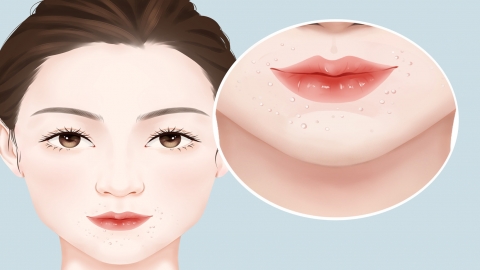What causes purple and dry lips?
In general, purple and dry lips may be caused by low-temperature stimulation, dietary irritation, cold sores, chronic bronchitis, pneumonia, and other reasons. If you experience any discomfort, please seek medical attention promptly and undergo symptomatic treatment under the guidance of a professional physician. Detailed analysis is as follows:

1. Low-temperature stimulation
When the body is in a cold environment, peripheral blood vessels constrict to reduce heat loss and maintain core body temperature. Vasoconstriction slows blood flow, reducing the efficiency of oxygen delivery to the lips, leading to increased reduced hemoglobin and causing the lips to turn purple. At the same time, low temperatures accelerate water evaporation from the lips, resulting in dryness. In cold weather, it is important to keep warm, minimize exposure time in cold environments, and wear masks, scarves, and other protective gear when going outdoors.
2. Dietary irritation
Long-term consumption of spicy, overly salty, or other irritating foods may stimulate the lip mucosa, affect blood circulation in the lips, cause changes in lip color, and increase water loss in the body, leading to dry lips. Daily diet should be balanced, with reduced intake of spicy, overly salty, and other irritating foods, and increased consumption of fresh fruits and vegetables rich in vitamins and moisture.
3. Cold sores
Cold sores are primarily caused by infection with the herpes simplex virus. After the virus infects the lips and replicates locally, it triggers an inflammatory response, affecting blood circulation in the lips. Inflammation also damages the barrier function of the lip skin and mucosa, leading to water loss and causing purple and dry lips. Symptoms such as lip pain and itching may also occur. Treatment may include medications such as famciclovir tablets, penciclovir cream, and acyclovir tablets, under a doctor's guidance.
4. Chronic bronchitis
Chronic bronchitis is often caused by long-term smoking, infections, air pollution, and other factors leading to chronic nonspecific inflammation of the bronchial mucosa and surrounding tissues. Inflammation narrows the airways, causing ventilation dysfunction, insufficient oxygen intake, and impaired carbon dioxide excretion, which lowers blood oxygen levels, causing the lips to turn purple. The inflammatory response may also increase respiratory secretions and water loss, resulting in dry lips. Symptoms such as coughing and phlegm production may also appear. Patients may take medications such as levofloxacin hydrochloride tablets, amoxicillin capsules, and ambroxol hydrochloride oral solution according to medical advice.
5. Pneumonia
Pneumonia is mostly caused by infection of the lungs by pathogens such as bacteria and viruses. Lung inflammation impairs gas exchange function, preventing oxygen from entering the bloodstream effectively from the alveoli, resulting in decreased blood oxygen saturation and purple lips. Symptoms such as fever caused by infection increase body water loss, leading to dry lips. Symptoms such as fever and chest pain may also accompany. Patients may take medications such as cefuroxime axetil tablets, cefixime capsules, and azithromycin tablets according to a doctor's recommendations.
In daily life, it is important to keep the lips clean and avoid lip injuries. When using gas appliances and similar equipment, ensure proper ventilation to prevent carbon monoxide poisoning.










